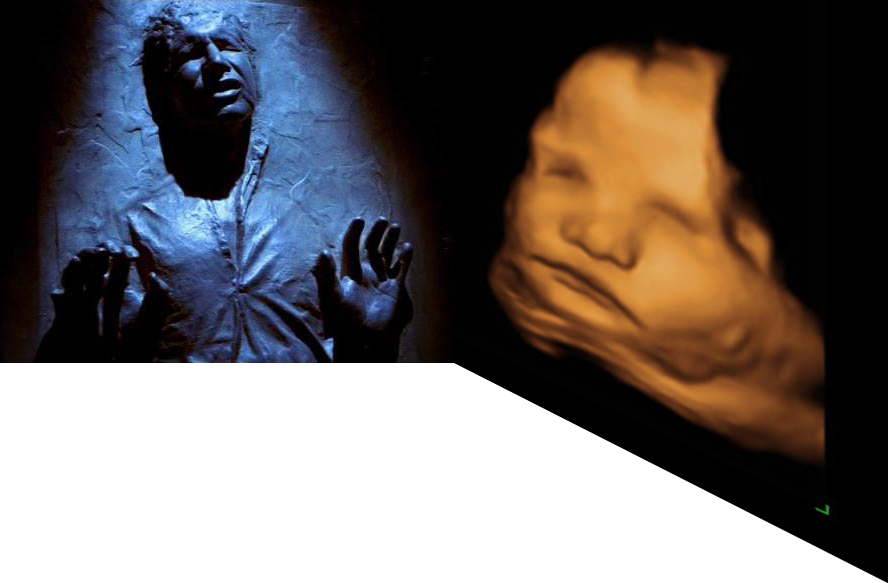Why Can’t Monsters Get Along With Other Monsters: Thoughts on Pacific Rim, Lovecraft, and the Endless Abyss
– H.P. Lovecraft
Essentially every culture has a mythological history which includes primal, undifferentiated formlessness: the abyss, as much topless as it is bottomless. Figuratively speaking, this abyss is neither aquatic nor interplanetary. Rather, it’s a little of both. The howling Tao, the primal ocean upon which Vishnu slumbered, amorphous being, chaos preceding time, primordial stew.
Today, in cockpits and bathyspheres, astronauts and their aquatic counterparts contort into metal cabins, surrounded by death, to peer from thick windows into empty, hostile landscapes. Cloaked in metal, they transport light where there has never been any — to what James Cameron, after his much-ballyhooed 2012 submersible dive to the Challenger Deep, called a “barren, desolate lunar plain,” or (more viscerally) which William Beebe, passenger in the world’s first bathysphere, described as “the black pit-mouth of hell itself.” From this hell-mouth emerge our literature’s greatest monsters, those embodying primeval dread itself: the Kraken of maritime myth, Godzilla, Cthulu, and now, the Kaiju aliens, which shimmy through an interdimensional breach at the bottom of the ocean and sow chaos on the coasts of the world in Guillermo Del Toro’s magnificent new film, Pacific Rim. READ MORE >
Chasing the Red Herrings in Greenaway’s Z+OO: a symposium of myself
It starts with a crash. You do not see the crash. You hear it. You see the aftermath. Typical. A dead swan splayed over the hood of a white Ford Mercury. The first time I typed that, I typed Mercy. Different cars are very much different sorts of animals. Domesticated animals, of course. Crossbreeds. It is said that the different sorts of hominids did not, could not, cross. Put that in my zonkey’s ass. The woman driving the car, who will be accused of taking mercury to procure an abortion, is named Bewick. The Mercury is no longer produced. You could say it is extinct. It was Ford’s answer to the Buick, you could say it was a fake Buick, a car that would no longer be were it not for waning appeal among wealthy Chinese (the last Emperor drove one, so did my grandma). Rauschenberg was born in the same town as my mom. This scene, the first of A Zed & Two Noughts, looks like something he might have filmed in the sixties, if only he had combined his interests (visual & performance art) into film, the way he did with found objects, like his notorious American bald eagle (an animal that will be mentioned later in this film when a prostitute named Venus de Milo asks the zookeeper for the tail feathers of that bird in order to write a dirty story, the same zookeeper who will later threaten to tell the director of the zoo, who is in fact the director of the film, about the brothers bringing the dead dalmatian into the zoo because it is “an abomination”). But then Rauschenberg dealt with death in ways more conceptual, less actual. I remember riding in the back of my grandma’s Buick because it had a passenger-side airbag. I remember carefully visualizing my death. I remember oak trees. The accident happens on Swan’s Way. Way is one of the ten most common words in our language. Weeks ago, this surprised me. But it should not be surprising that the journey is more popular than the destination. We’re a restless race. We want tiggers in our tanks & Michael Nyman to speed up & O will he!
I don’t know why we call it writing when it is clearly a matter of selecting
A book has neither object nor subject; it is made of variously formed matters, and very different dates and speeds. To attribute the book to a subject is to overlook this working of matters, and the exteriority of their relations. It is to fabricate a beneficent God to explain geological movements. In a book, as in all things, there are lines of articulation or segmentarity, strata and territories; but also lines of flight, movements of deterritorialization and destratification. Comparative rates of flow on these lines produce phenomena of relative slowness and viscosity, or, on the contrary, of acceleration and rupture. All this, lines and measurable speeds, constitutes an assemblage. READ MORE >
“Sirk has said you can’t make films about something, you can only make films with something — with people, with light, with flowers, with mirrors, with blood, with all these crazy things that make it worthwhile.”
— Fassbinder
That’s how I feel with poetry.
“We’ve made the future redundant, and therein lies the danger.” — Gonçalo M. Tavares
October 18th, 2012 / 12:33 am








